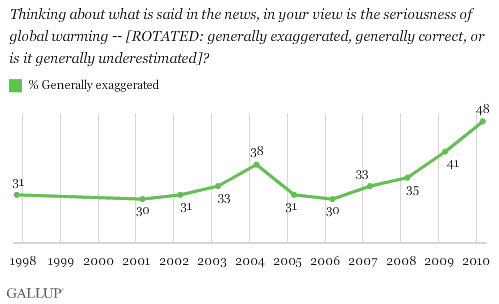http://bearmarketnews.blogspot.com/2009/10/toxicologic-assessment-of-armys-zinc.html
Dew I
Operation Dew I consisted of five separate trials from March 26, 1952 until April 21, 1952 that were designed to test the feasibility of maintaining a large aerosol cloud released offshore until it drifted over land, achieving a large area coverage.
[2] The tests released
zinc cadmium sulfide along a 100-to-150-nautical-mile (190 to 280 km) line approximately 5 to 10 nautical miles (10 to 20 km) off the coast of Georgia, North Carolina and South Carolina.
[2] Two of the trials dispersed clouds of zinc cadmium sulfide over large areas of all three U.S. states. The tests affected over 60,000 square miles (150,000 km²) of populated coastal region in the U.S. southeast.
[3] The Dew I releases were from a Navy minesweeper, the
USS Tercel.
[2]
Dew II
Dew II involved the release of fluorescent particles and
Lycopodium spores from an aircraft.
[2] Dew II was described in a 1953 Army report which remained classified at the time of a 1997 report by the
U.S. National Research Council concerning the U.S. Army's zinc cadmium sulfide dispersion program of the 1950s.
[2]
Operation LAC
From Wikipedia, the free encyclopedia
Operation LAC was undertaken in 1957 and 1958 by the U.S. Army Chemical Corps.
[2] Principally, the operation involved spraying large areas with zinc cadmium sulfide.
[1] The
U.S. Air Force loaned the Army a
C-119, "Flying Boxcar", and it was used to disperse zinc cadmium sulfide by the ton in the atmosphere over the United States.
[3] The first test occurred on December 2, 1957 along a path from South Dakota to
International Falls, Minnesota.
[4]
The tests were designed to determine the dispersion and geographic range of biological or chemical agents.
[3] Stations on the ground tracked the
fluorescent zinc cadmium sulfide particles.
[3] During the first test and subsequently, much of the material dispersed ended up being carried by winds into Canada.
[4] However, as was the case in the first test, particles were detected up to 1,200 miles away from their drop point.
[3][4] A typical flight line covering 400 miles would release 5,000 pounds of zinc cadmium sulfide and in fiscal year 1958 around 100 hours were spent in flight for LAC.
[4] That flight time included four runs of various lengths, one of which was 1,400 miles.
[4]
Specific tests
The December 2, 1957 test was incomplete due to a mass of cold air coming down from Canada.
[4] It carried the particles from their drop point and then took a turn northeast, taking most of the particles into Canada with it. Military operators considered the test a partial success because some of the particles were detected 1,200 miles away, at a station in New York state.
[4] A February 1958 test at Dugway Proving Ground ended similarly. Another Canadian air mass swept through and carried the particles into the Gulf of Mexico.
[4] Two other tests, one along a path from
Toledo, Ohio to
Abilene, Texas, and another from
Detroit, to
Springfield, Illinois, to
Goodland, Kansas, showed that agents dispersed through this aerial method could achieve widespread coverage when particles were detected on both sides of the flight paths.
[4]
Scope
According to
Leonard A. Cole, an Army Chemical Corps document titled "Summary of Major Events and Problems" (1958) described the scope of Operation LAC. Cole stated that the document outlined that the tests were the largest ever undertaken by the Chemical Corps and that the test area stretched from the Rocky Mountains to the Atlantic Ocean, and from Canada to the Gulf of Mexico.
[4] Other sources describe the scope of LAC varyingly, examples include, "Midwestern United States",
[3] and "the states east of the Rockies".
[1] Specific locations are mentioned as well. Some of those include: a path from South Dakota to Minneapolis, Minnesota,
[2]Dugway Proving Ground,
Corpus Christi, Texas, north-central Texas, and the
San Francisco Bay area.
[1]


